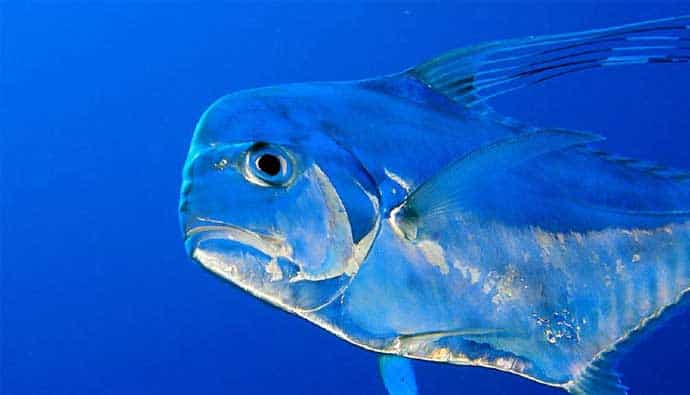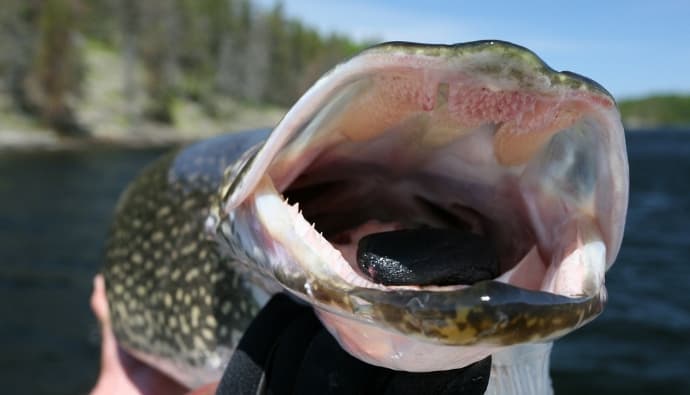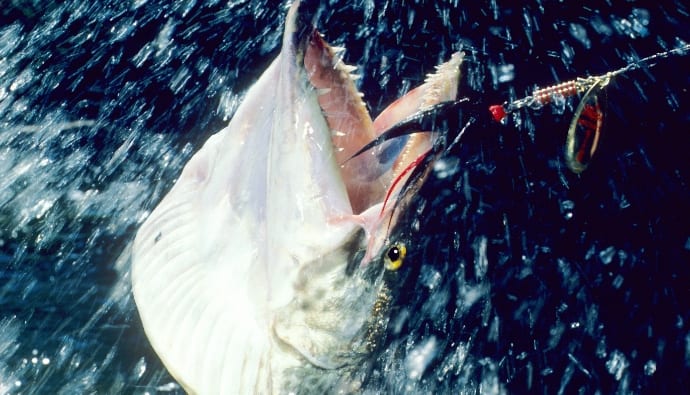Want to catch the elusive African pompano but don’t know how to go about it? This guide will help you figure out the best techniques that can help you catch these beauties.

Also known as the threadfin trevally and the pennant fish. The African pompano can be found in tropical waters across the globe but it is most common in coastal waters.
Overview of the African Pompano
African pompano can be found on the east and west coasts of South America, Africa, across the Indian Ocean, and along Asia and Australia. It’s a member of the jack family. It is a laterally compressed fish with a tapering tail and a curved head. African pompano also has several visible spines on its dorsal fins.

The young African pompano is a schooling fish and can be found in open water, and the adult African pompano can be found 180 feet deep underwater and near wrecks, ledges, and reefs. The African pompano is known for the fierce fight it puts up when it is hooked, so make sure you have the strength to overpower the fish and haul it on board.
African Pompano Fish Facts
| Scientific Name | Alectic ciliaris |
| Common Name(s) | African Pompano , pennant fish, or threadfin trevally |
| Family | Carangidae (the jack family) |
| Identifying Characteristics | The fish is very similar to the other members of the genus alectis. Has a compressed fish with a tapering tail and a curved head. The fish also has several visible spines on its dorsal fins. The dorsal fin begins in front of anal fin. It exhibits filamentous anal and dorsal fin rays. |
| Depth Range | 180 feet |
| Habitat | This fish species can be found on the east and west coasts of South America and Africa, mostly in tropical waters worldwide. It’s in the Indian Ocean and along Asia and Australia. They prefer coastal waters. |
| Limits | Check your local regulations |
| Largest Recorded | 25 inches long and 9 pounds |
| Status | No |
African Pompano Habitat
Adult African pompano prefer to remain in coastal waters and tropical waters worldwide in depths of about 100m amidst reefs and wrecks throughout a water column.
Juveniles are pelagic by nature, and they can be found swimming in the open ocean around coastal areas. The African pompano relies on water currents which is why they can also be found in estuaries in lower Australia. Most do not survive the cold winter temperatures.
They are often caught among other tropical midwater fishes by hook and line. On the other hand, the juveniles are taken in beach seines.
How to Catch African Pompano

Since this fish species is widely spread, finding schools where you can drop a hook in can be a challenge. Just make sure before looking for one to consider your gear carefully.
If you are targeting a large specimen, for instance, use a 50lb braid line on an Accurate BX reel. You will need to pull hard, and this line will give you the leverage you need to reel in a whopper!
Pompano Fishing Rigs
The best bait for African pompano is the slow trolling variety, especially if you find a school that is close to the surface. You can also use small live bait (such as smaller fish like pilchard or shrimp and slugs) as well as jigs, lures, and feathers to attract the fish.
You can toss chum on the surface of the water to make a school go into a frenzy and use fly tackle.
African Pompano Fishing Tactics
- Use bait buttons to prevent live bait from sliding up and on the hook and fishing line. It will also prevent the fish from ripping off the bait completely.
- The African pompano fish moves inshore in the summer, so you will increase your chances of catching them if you use live bait during this time. Use jigs in winter when the fish is in deeper water.
African Pompano Fishing Tips
- These fish like warm water, so look for them above wrecks. Use live chumming when you’re reef fishing or fishing shallow wrecks. This is very effective.
- Most African pompano geared rigs come with two to three hooks, so use this to your advantage by using many pompano fish bait such as shrimp, squid, and sand flea.
African Pompano Seasons
African pompano fish starts showing up in June when the temperature of the water climbs up into the 60s. The fish does not emerge in huge numbers till temperatures are at their hottest (between August and September).
The schools disappear completely with the arrival of the cold front during the fall and appear offshore. The fish spawns inshore from spring to fall and peaks in April and May.
Florida pompano fish usually appears in Florida around October and are well dispersed throughout the state by December or January. The fish migrates back north by April and June when the temperatures start to drop.
How to Clean African Pompano
- Place the African pompano on a cutting board.
- Use a sharp knife to make an incision in the soft part of the head right near the eye and cut up to the backbone.
- Without taking the knife out, cut all the way down the backbone to the tail.
- Make many passes with the knife following the backbone until you get to the end of the incision and can remove the fillet with the skin.
How to Cook African Pompano
African Pompano Recipe
- Turn on the grill.
- Mix 2 tablespoons of sugar, 2 tablespoons of lime juice, some grated ginger, 1 tablespoon of fish sauce, and some garlic in a bowl.
- Season the pompano fillets with salt and pepper and grill for 3 minutes per side or till the fish is cooked through.
- Place the cooked fillets on a plate and drizzle the sauce on top.
- Serve with cilantro.
Frequently Asked Questions
Yes, the flesh of the African pompano fish is firm and clean. It also has a lot of fat, but it is far from oily, which makes it great table fare.
The pompano is round in shape but it has the narrow-bodied structure of a flatfish. The skin is silvery and is smooth enough to not need scaling.
Pompano fish eat small crustaceans, shrimp, and on occasion, small baitfish such as pilchard.
Like most large reef fish, pompano can also carry ciguatera poisoning, but this is more common in species that can be found in the Bahamas.
Insider Advice
Word to the wise – if you want to catch this elusive but powerful fish, ask a couple of friends to come with you. Pompano put up a huge fight, and you will need all the help you can get to reel one in!
If you are a veteran at catching African pompano, don’t be shy and share your experiences in the comments below. Do share this guide if you liked it.




 Facebook
Facebook YouTube
YouTube








